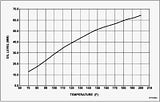- Joined
- Apr 13, 2013
- Messages
- 3,220
How far do you guys usually drive to ensure the ATF is fully warmed up? I usually drive 5-10 miles at 45-55 mph. Done this on different cars and I consistently get accurate dipstick readings after a fluid change. I tried just idling in place while shifting through the gears in the past but couldn't get true readings.



